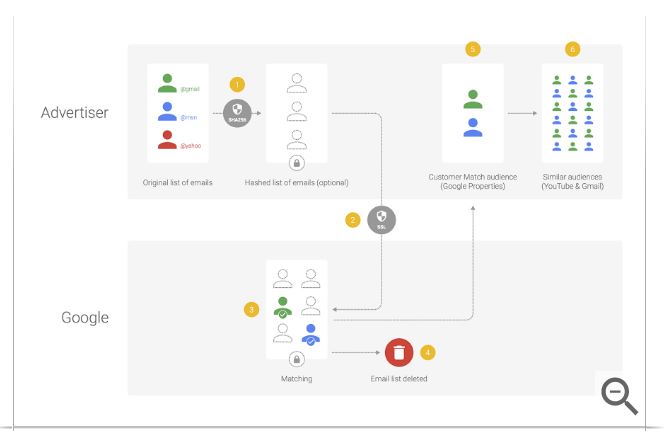Advertisers on the Impact of Customer Match for Google Shopping


Thanks to the introduction of Customer Match for Google Shopping – advertisers can focus campaigns on their highest-value audiences – including previous purchasers, rewards members, newsletter subscribers, or local in-store shoppers.
Customer Match is a feature aimed to re-engage loyal customers as they shop on Google.
Last year, we covered the announcement introducing Google Customer Match to Search, Gmail, and YouTube, allowing advertisers to upload a list of email addresses, which can be matched to signed-in users on Google.
Customer Match for Shopping allows advertisers to adjust bids across various segments of their known customers.
Advertisers upload a list of email addresses into AdWords, that are matched to signed-in users on Google. Then they can create a remarketing list to reach these customers across campaigns.
Below is an example of how Customer Match for Google works:

According to Google, approximately 70% of online consumers agree that the quality, timing, and relevance of a brand’s message influences their perception of a brand.
The primary goal of Customer Match is to help retailers reach customers that they already have a relationship with — like those in their loyalty program or those who have made a previous purchase — in ways that are most relevant to their intent and context.
Although the program is still in beta, advertisers can sign up here for an early inclusion.
Prior to Customer Match, retailers were able to serve display ads to customers using retargeting lists in Google Analytics or tailor bids / ads to audiences using Retargeting Lists for Search Ads (RLSA).
Although useful, previous retargeting efforts are based off of cookies – which customers can block or easily avoid since they are not typically optimized for mobile.
In contrast, Customer Match uses email addresses and user- sign ins -which are considered more reliable across all devices.
“Earlier this year, Rick Backus, CEO at CPC Strategy predicted Google would build out a feature to retarget audiences using email addresses and finally catch with Facebook’s targeting methods.
Although it is too early to gauge initial results from the new Shopping beta, we asked our team of experts to chime in on the impact they’ve seen from the Customer Match for Search, Gmail, and YouTube.
“I think I can give a general consensus for Text & Display, that we have seen very limited results in terms of volume. I haven’t seen or heard this really moved the needle for anyone,” – Josh Brisco, Manager Retail Search Operations at CPC Strategy
 Although account performance has been strong, in general – we’ve seen very limited volume and little discernible impact from Customer Match.
Although account performance has been strong, in general – we’ve seen very limited volume and little discernible impact from Customer Match.
One possible theory for the lack of impact is due to potential misalignment among “Match” rates and the exclusivity of the feature.
“The ad only shows to users who have a Gmail account, and are logged into their Google account, and searching for a keyword/product eligible to trigger and impression,” Roman Fitch, Retail Search Manager at CPC Strategy.
Below are details about how the matching process works and how Google processes the files advertisers upload:
We will continue to monitor the impact of Customer Match for Google Shopping over the next few weeks. For more information on how to create a customer email list, check out our recent post here.
For more on Customer Match for Google Shopping, email tara@cpcstrategy.com

Notifications